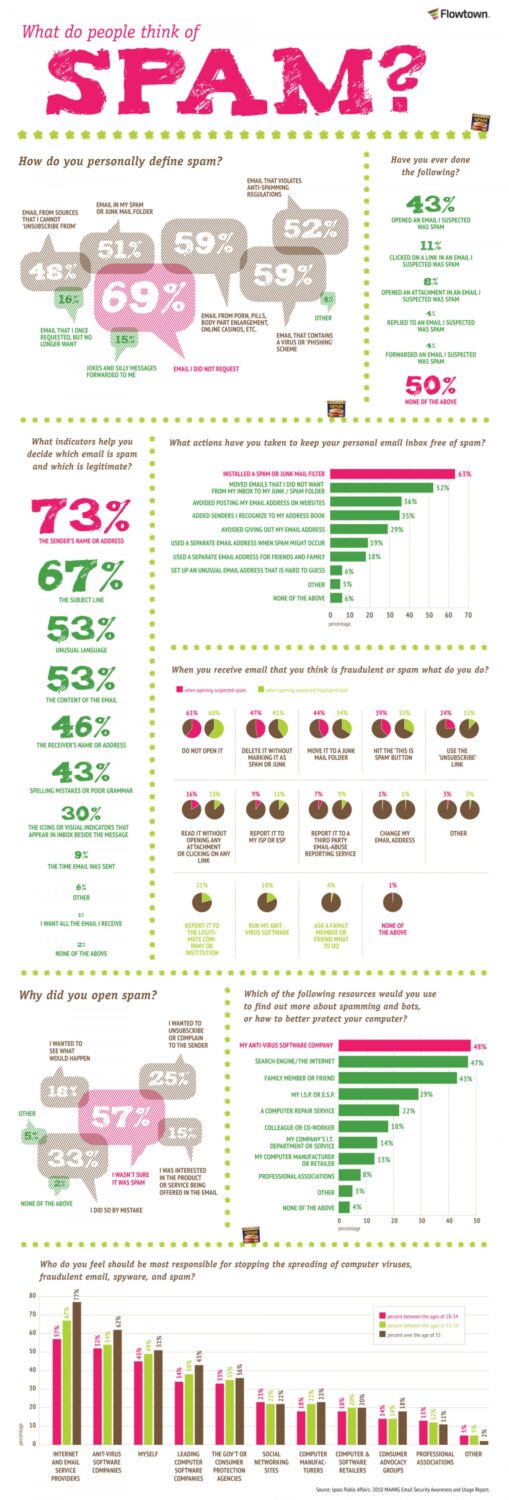
Have you heard from Stephen G. Awulo? No? Well, I am sure you will one of these days. He sent me a “Strictly Confidential” e-mail saying that he’d found a frozen Nigerian bank account containing $42.5 million. The reason he wrote is that he needs a partner who lives in a foreign country to “recover” the cash. I’m that lucky person. All I need to do is send my bank name, address and account number, and 30 per cent of the money will be mine. This will be the easiest $12.75 million I’ve ever made.
A third of the 30 billion e-mails sent worldwide each day are spam. That’s 10 billion ads a day for such rubbish as Nigerian scams, herbal Viagra and breast-enlarging creams. Software has not been able to stop this flood, nor have the laws and litigation. Spam e-mail is out of control and has been annoying people ever since the internet was invented.
69% of email users agree that spam is any e-mail that was not requested by a user but was sent to that user. 59% consider e-mail from porn, pills, body part enlargement, online casinos or contains a virus or phishing scheme to be spam.
Almost 73% of users say they identify spam by looking at the sender’s name or address. About 67% of users identify spam by looking at the subject line.
We found that users were employing the simplest methods to avoid attracting spam. 63% of the users apply spam filters to their email system. 52% said simply that they move spam e-mail from inbox to spam folder.
This infographic looks at spam and shows how do people think about spam and what actions have been taken to keep personal email inbox free of spam.













